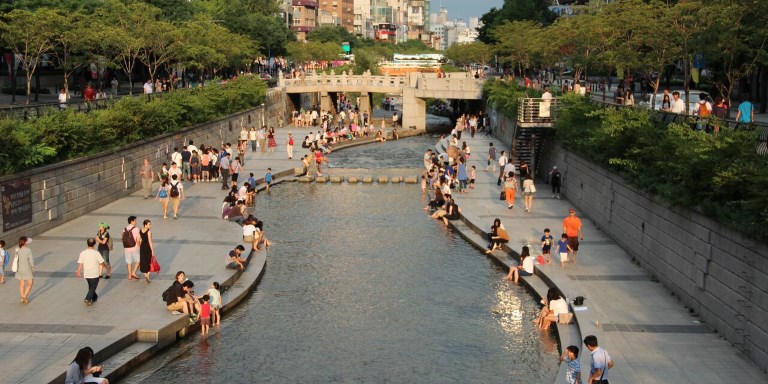The city of Seoul, Republic of Korea, has pursued a comprehensive approach to improvements in the walking environment through a series of pedestrian plans prepared in 1998, 2004, and 2013. The pedestrian planning process aims to identify solutions to several issues, including a lack of adequate pedestrian sidewalks; a high rate of crashes involving pedestrians on smaller streets; and low pedestrian satisfaction. The Seoul Traffic Vision 2030 outlines a paradigm shift from a previous emphasis on car-oriented mobility to a new focus on access and shared mobility.
In support of these goals, the Vision identifies a number of quantitative targets, including an increase in the fraction of street length with sidewalks and a reduction in the number of pedestrian fatalities. The Vision proposes several actions, including district-level pedestrian plans; school zone regulations; at-grade crosswalks; pedestrian improvements near public transport stops; expanded pedestrian signage; universal access improvements; public toilets and other streetscape amenities; and walking events.
The master plan is expected to strengthen existing initiatives to improve convenience for pedestrians. In recent years, the city has implemented over 3,000 at-grade pedestrian crossings while decommissioning numerous pedestrian footbridges. Seoul has 24 pedestrian-only streets and is planning new car-free streets in several districts across the city. The city also implemented the iconic greenway along the Cheonggyecheon River where an elevated highway once stood. These measures, in combination with other interventions, have brought about a steady reduction in the rate of crashes over recent years.
